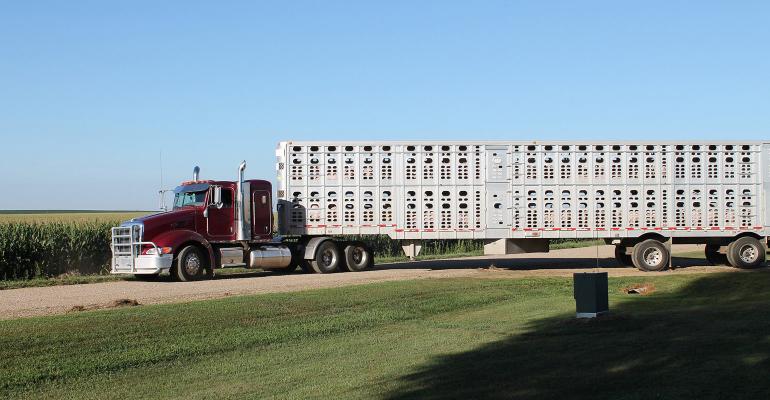LIVESTOCK TRUCKERS NEED RELIEF FROM DRIVING RULES

Congress approves legislation, and, generally, the public knows what it would do. But the regulations that implement our laws can make one’s eyes glaze over – and cause real problems for those who must comply with them. Such is the case with a federal rule mandating that truckers replace the simple and inexpensive paper driving logs they’ve used for decades with expensive and complicated Electronic Logging Devices (ELDs).
ELDs, which can cost from $200 to $1,000 plus a $30-$50 monthly fee, record driving time, engine hours, vehicle movement and speed, miles driven and location information. They electronically report that data to federal and state inspectors. The devices supposedly will help the Department of Transportation (DOT) enforce its Hours of Service regulation, which limits commercial truckers to 11 hours of driving time and 14 consecutive hours of on-duty time in any 24-hour period. Once drivers reach that limit, they must pull over and wait 10 hours before driving again.
The ELD regulation, which took effect Dec. 18 last year, applies to all commercial vehicles involved in interstate commerce. That includes trucks that haul livestock, and that’s a problem.
Livestock haulers are responsible for the daily transportation – and safety – of millions of animals. Because livestock such as pigs are vulnerable to health issues triggered by extreme temperatures, long-established industry standards preclude drivers from stopping while hauling animals. But many of the practices that ensure the safety of animals – and your food – potentially run afoul of the ELD and Hours of Service rules. (When the temperature is 100 degrees, a driver can’t just pull off the road, sleep for 10 hours and leave his pigs to die in the heat.)
While truckers who haul livestock got a 90-day waiver from the ELD mandate – it expires March 18 – the livestock industry needs equipment and rules that would meet its unique needs. DOT is working on it, but the agency likely won’t have anything before mid-March. Regardless, livestock agriculture needs less eye-glazing regulations.